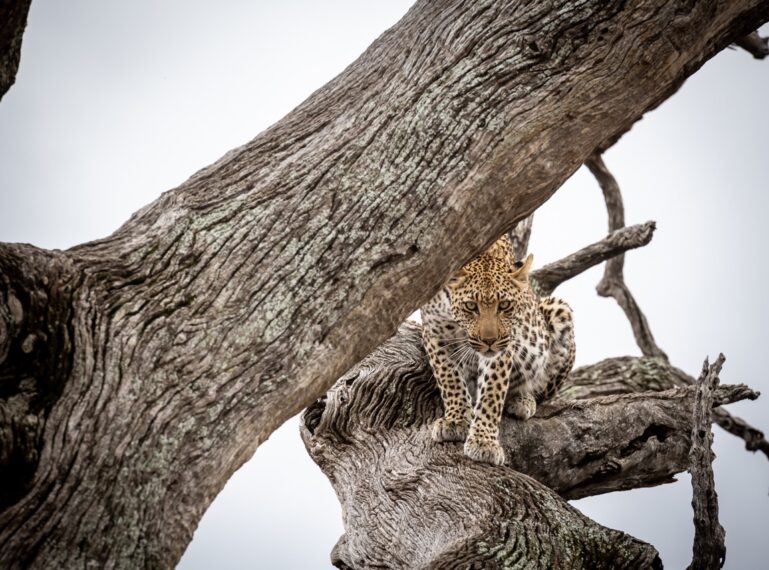
Unpacking the fascinating hunting styles of Africa’s predators reveals more than survival. It tells the raw, unfiltered truth about life in the wild. In the bush, especially in dry season, predator-prey action takes centre stage. What may appear to be chaos to come is, in fact, a complex dance of instinct and adaptation.
Each predator has its own unique strategy. For some species, hunting is a game of patience.
Waiting for just the right moment to spring an attack. For others it’s all about speed, endurance, or sometimes unlikely teamwork.
Each predator has evolved with its own way of navigating the brutal necessity of the hunt. While it can appear harsh to the outside observer, it is simply nature taking its course. There is nothing like the wild to teach us about the delicate balance of life and death. It is not cruelty nor chaos. It is pure survival.
Within it there is a deeper understanding of resilience, instinct, and the extraordinary design of the natural world.
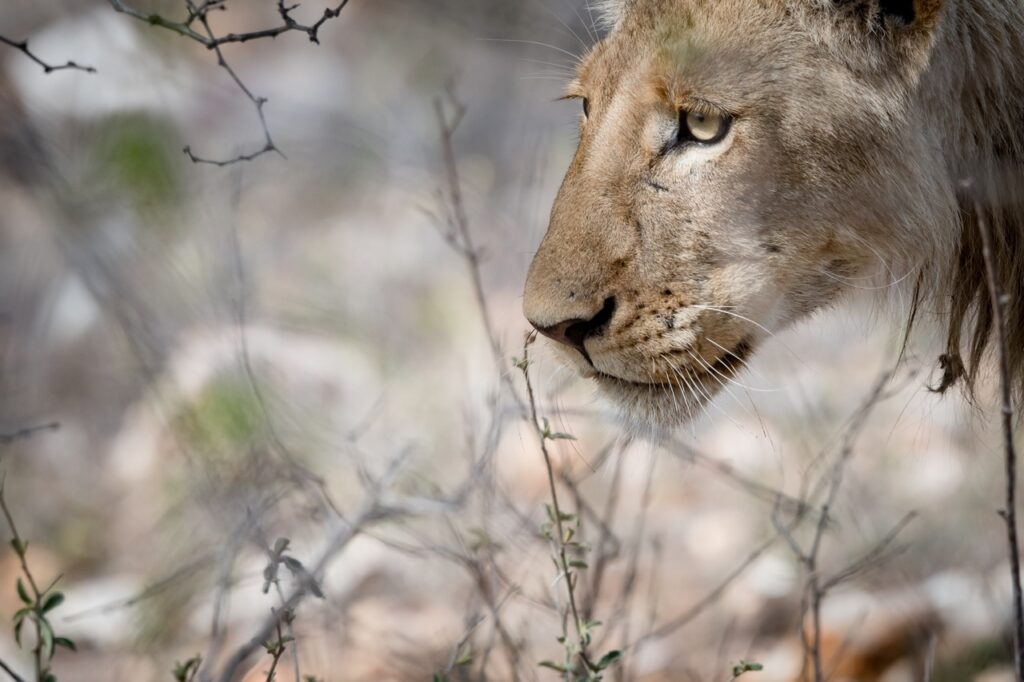 Kings and Queens of the savannah
Kings and Queens of the savannah
These kings and queens of the savannah don’t rely on solo or solar power.
Lions (especially lionesses) are masters of teamwork, using coordinated ambush tactics and the cover of darkness to hunt with deadly precision.
As stalk-and-ambush predators, lions rely on stealth and timing rather than speed alone. Once a lion spots potential prey, it will approach slowly and deliberately, crouching low with ears flattened to avoid detection. They often position themselves downwind, letting the breeze carry their scent away from their prey. Every movement is calculated. For life depends on their ability to catch prey.
When in striking distance, they burst into action. Lions can reach speeds of up to 60 km/h but only for 100-200m. To outmanoeuvre their prey, they will work together to cut off escape routes, increasing the odds of a successful meal.
They will hang on with their powerful claws until they bring the animal down. For larger animals they will typically suffocate them with a crushing bite to the throat or over their mouths. While smaller prey are killed with a lethal bite to the spine.
Lionesses are the ones who will work together and do most of the hunting while males will typically spend their energy defending their territories.
Cackles, calls, and clans
Known as the savannah’s scavengers but actually hyena remarkably efficient and intelligent hunters in the bush.
Contrary to popular belief and Disney narrative, hyenas are not just scavengers. In fact, spotted hyenas hunt up to 80% of their own food. They will often work as a team using their astounding endurance to wear prey down. They are almost opposite to lions who ambush prey, they will exhaust prey and are successful due to their stamina and persistence.
The cackles and calls of hyena in the night are more than simple the soundtrack of the bushveld. Hyenas have incredibly complex social structures and their varied vocalisations are a form of communication that helps them to coordinate.
Ever noticed how the whooping call of one hyena will be responded to by another in a different place?
Master of stealth – The leopard
Unlike hyena who really on their calls for hunting, the leopard relies on its silent stealth.
Silent and solitary, they can slip through landscapes totally unseen. These elusive big cats are rarely seen or heard which makes them thrilling to encounter.
Whether in dense forest, rocky hillsides, or open savannah, they have perfected the art of being invisible until it’s too late. They hunt alone, mostly in darkness and rely on stealth and timing to hunt.
They will then haul prey, sometimes 2-3 times their own weight, up a tree. This remarkable display of strength and power allows them to protect their hard-earned meal from predators and scavengers as well as eat their meal in peace.
Tenacious and tough, the honey badger
The most audacious predator out in the wild might be this small but fierce creature. Honey Badgers are tough. They are master infiltrators are that fearless and fiercely intelligent.
Despite their small size, honey badgers have been known to take on lions, leopards, and even buffalo. With a hide that’s thick and loose, they can twist nearly 360 degrees within their skin, allowing them to bite back even when pinned.
They’re infamous for their thieving habits and have been caught red-handed raiding kitchens and food stores (check out the video from nThambo here). You definitely wouldn’t want to corner one of these fierce little warriors.
Perhaps their fierce reputation comes from them being fearless snake-hunters. Immune to the venom of some of Africa’s most dangerous snakes, honey badgers routinely go after puff adders, cobras, and other deadly species. They aim for the head, and even if bitten, may only become temporarily immobilized, often waking up, shaking it off, and finishing their meal like nothing happened.
They are cunning thieves. Much like a grumpy version of Winnie-the-Pooh, honey badgers get their name from their absolute love for honey. They’ll raid beehives, completely ignoring thousands of stings and use the chaos to access honey and larvae. They’ve also been observed following honeyguide birds to locate hives.
Persistent and clever, honey badgers are a built for survival and are a remarkable example of adaptation in the African wilderness.
Teamwork makes the dreamwork
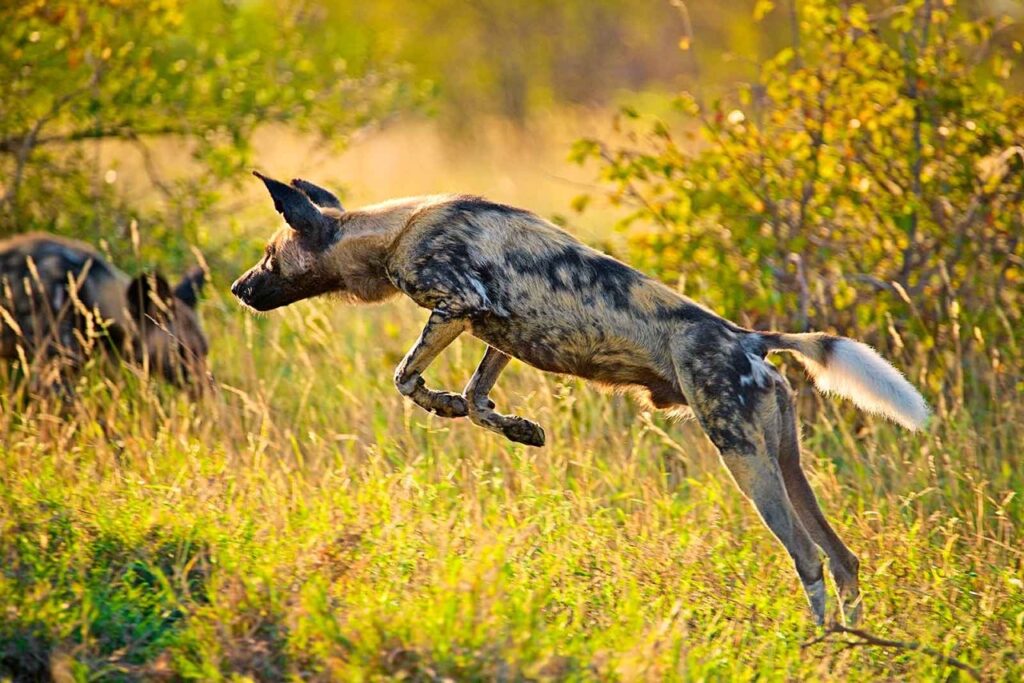 Wild dog are perhaps the most successful hunter in the African wilderness. Relying on speed, stamina and their incredible social bonds.
Wild dog are perhaps the most successful hunter in the African wilderness. Relying on speed, stamina and their incredible social bonds.
If there’s one predator that proves teamwork makes the dream work, it’s the African wild dog.
These highly-social canines are the ultra-marathon runners of the bush. They hunt in well-coordinated packs and have incredibly complex vocalisations, they are able to strategise and wear their prey out until they collapse from sheer exhaustion.
They run their prey to complete exhaustion over long distances, taking turns to keep the pressure on until their target simply can’t run anymore.These hounds can maintain speeds of 60-70km/hr for 4-5km – that’s an insane endurance athlete!
 It is no wonder that they need to eat at least once a day if not twice a day!
It is no wonder that they need to eat at least once a day if not twice a day!
Their rapid digestive system that caters to their high energy demands of a rapid metabolic rate. The amount of energy they exert in their hunting means it is vital for them to eat often and to not lose their hard-earned meal to other predators.
African wild dogs exhibit what almost seems like altruistic behavior when it comes to their pack mates. At a kill, the youngest dogs eat first, followed by the subordinate members of the pack. Everyone takes their turn and if there isn’t enough to go around, the hunt begins again.
During denning season, which is happening right now! Keep an eye out on our socials for dens near our camps! Packs hone in on their normally vast roaming ranges, choosing instead to base themselves in a single location, finding a den for their pups. They will typically seeking out uninhabited termite mounds. Life during denning season is all about balance.
While some members head off on hunts, others stay behind to babysit and protect the pups. After a hunt, returning adults will regurgitate freshly eaten meat for the waiting young.
They’ll remain like this until pups are old enough to join the pack on hunts and become valuable members contributing to the survival of all.
Secretary bird
It would not be correct for us to mention predators of the wilderness and not include at least one birds of prey. Perhaps, deserving an entire post of their own.
The secretary bird might be the most surprising of hunters! Who expects a bird to karate-kick a cobra to death?
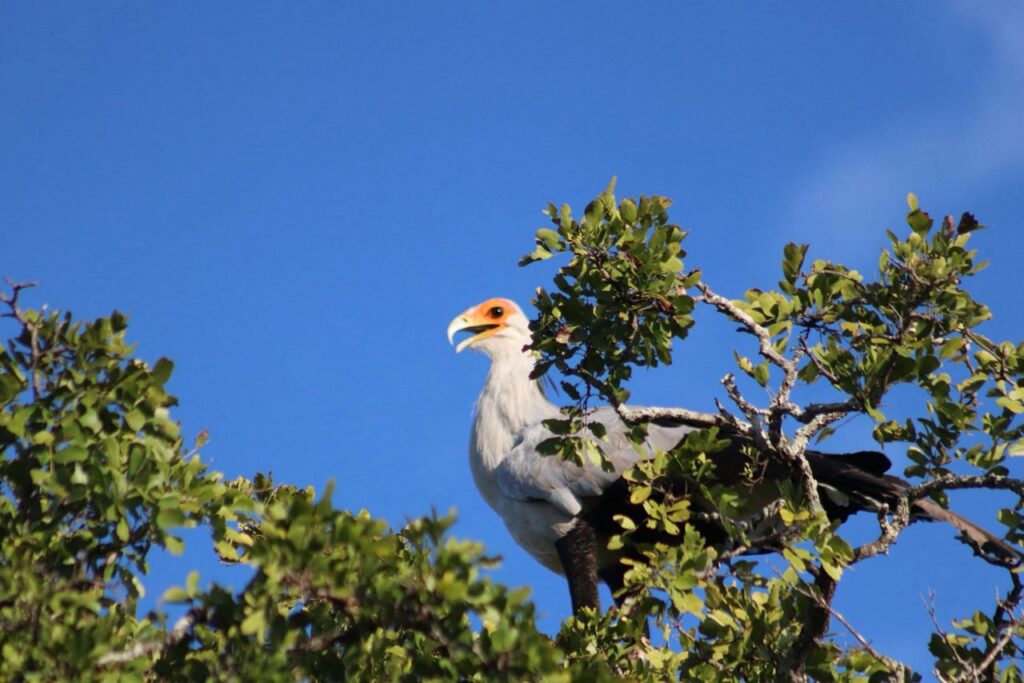
A secretary bird, rarely seen up in a tree, these giant birds are often seen ambling through the bush with their elegant gait. Captured at Umkumbe Safari Lodge.
These tall elegant birds (who look like they’re wearing tuxedo suits with feather quills tucked behind their ears! Hence the name secretary bird!) are famous for they ability to hunt venomous snakes.
They have extremely long and powerful legs covered in scales that protect them from bites.
They will stomp on the snake to death, delivering sharp kicks with remarkable precision and accuracy.
Watch them in action here!
Ready for your next adventure in the wild?
Contact our reservations team to curate your dream safari here.
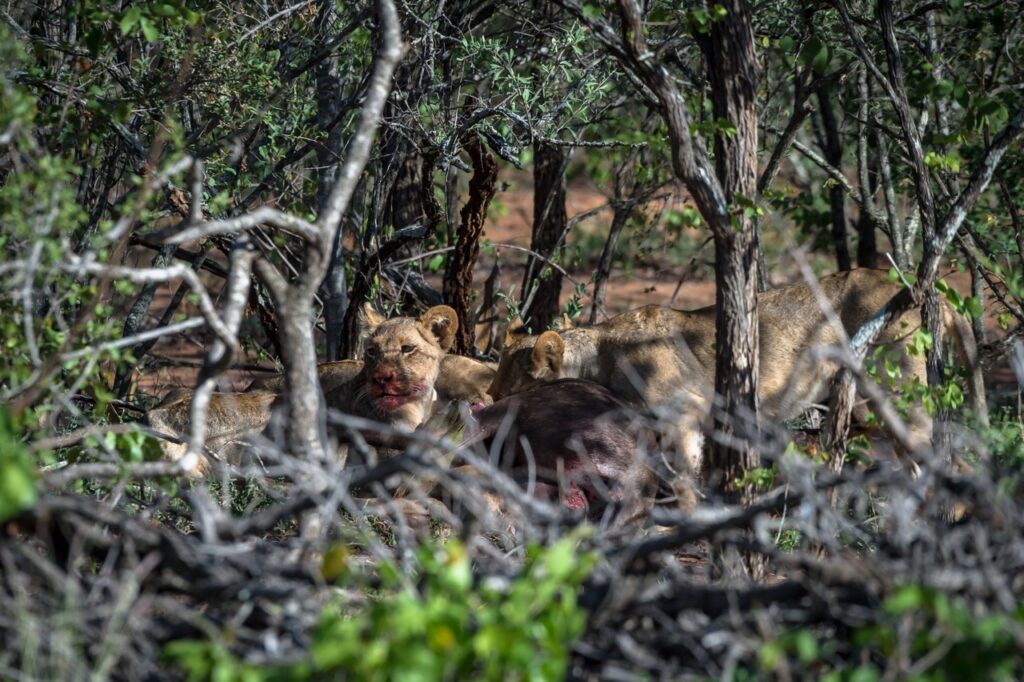
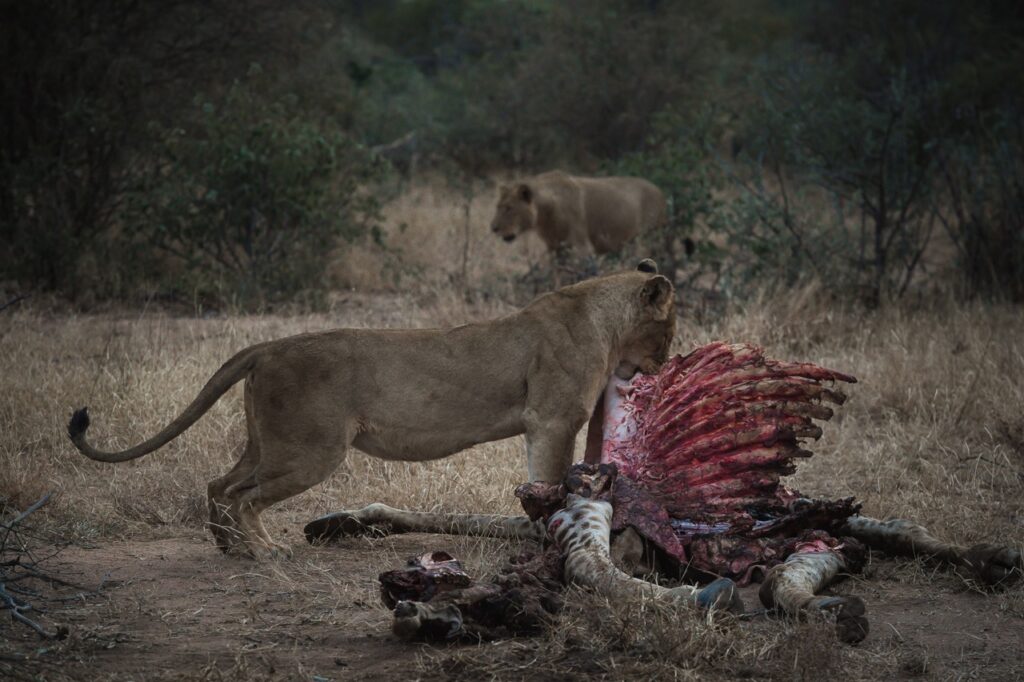
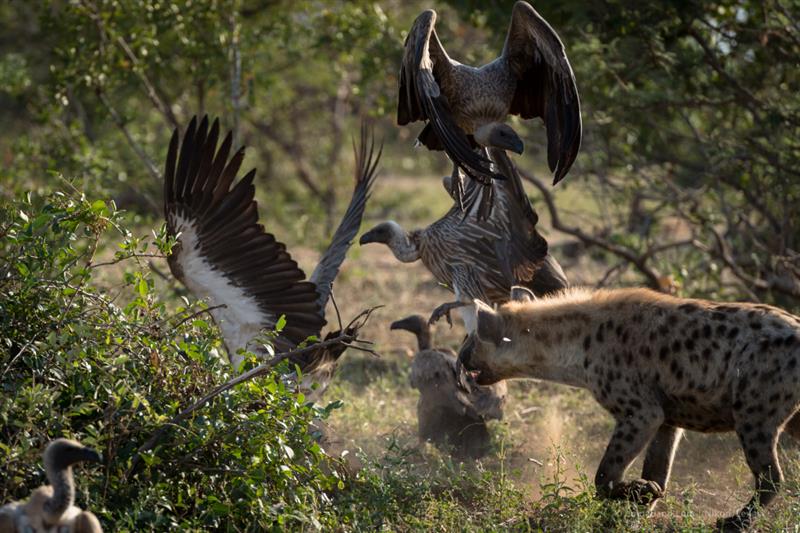
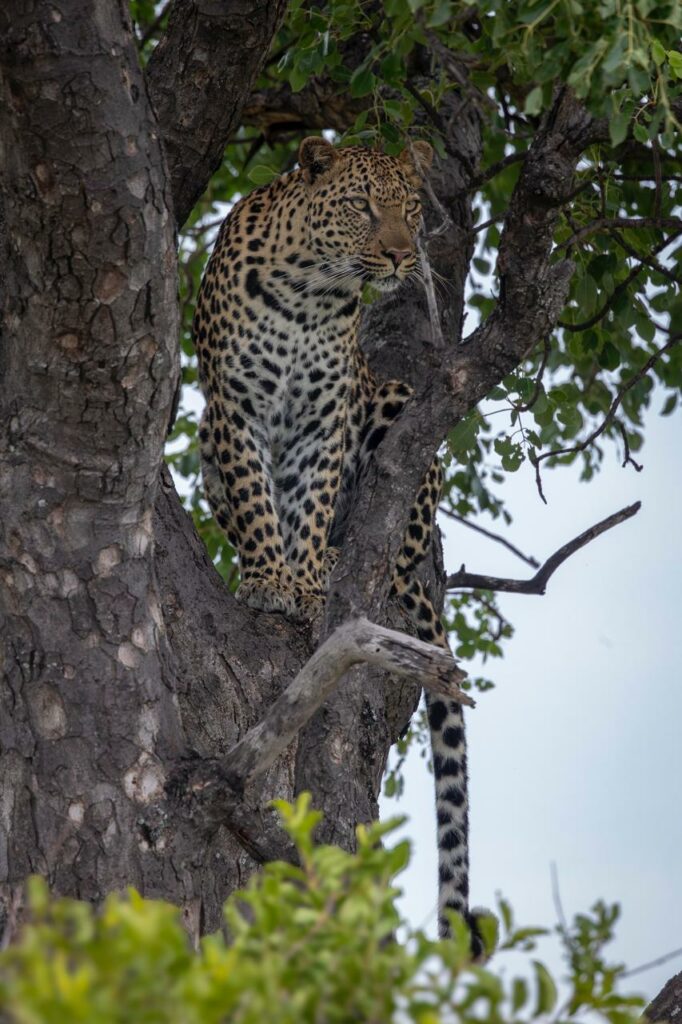


Leave a Comment